Welcome to the fifth post in our series, “India’s Economic Odyssey: Past to Present.” Today, we embark on a journey through the transformative period of the 1990s when India took bold steps towards economic liberalization. This era not only redefined India’s market dynamics but also set the stage for its emergence as a key player in the global economy. Let’s dive into the pivotal reforms that unleashed the potential of India’s economy, fostering growth, innovation, and integration with the world.
The Prelude to Reform
Before delving into the transformative era of liberalization in India, it’s crucial to understand the prelude that set the stage for these sweeping changes. By the late 1980s, India’s economy was grappling with challenges that stemmed from decades of protectionist policies, licensing regimes, and a focus on self-reliance that, while well-intentioned, had led to inefficiencies and a lack of competitiveness on the global stage. The country was heavily reliant on agriculture, with industry and manufacturing lagging behind due to regulatory constraints and lack of innovation. This period was marked by slow economic growth, high fiscal deficits, and a burgeoning external debt that put India on the brink of a financial crisis.
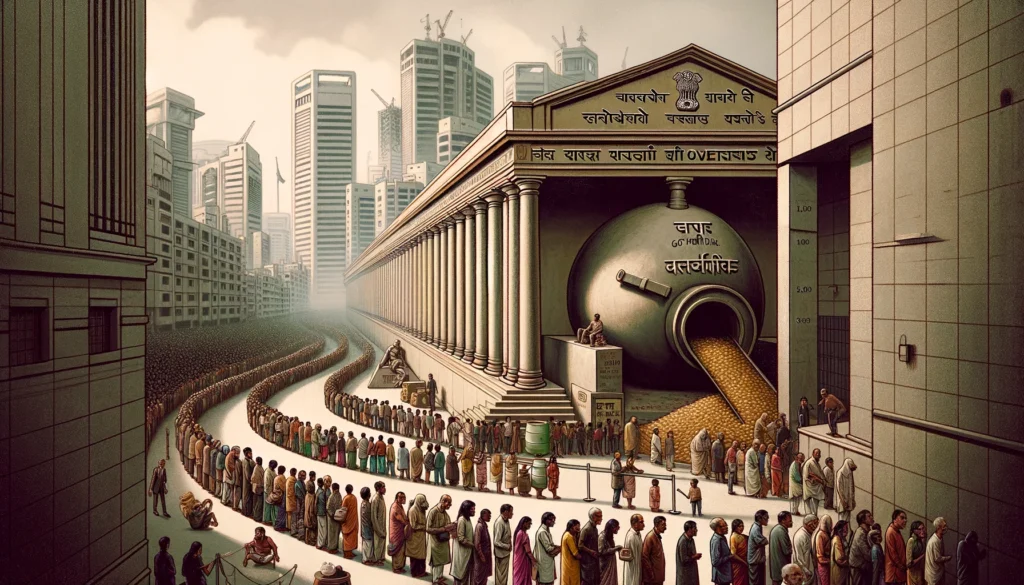
The situation reached a critical point in 1991 when India faced a severe balance of payment crisis. The country’s foreign exchange reserves had dwindled to a point where it could barely cover a few weeks of imports. The crisis was a wake-up call, signaling the urgent need for economic reforms. It prompted the Indian government to seek assistance from international financial institutions, which recommended a series of structural reforms aimed at stabilizing the economy and laying the groundwork for sustainable growth.
Liberalization: Opening the Gates
The response to the crisis and the conditions set by the International Monetary Fund (IMF) for a bailout package ushered in a new era for India’s economy. In 1991, under the leadership of then Finance Minister Dr. Manmohan Singh, India initiated a series of economic reforms that collectively came to be known as liberalization. The primary goal was to open up the Indian economy to the global market, attract foreign investment, and enhance the country’s economic competitiveness.
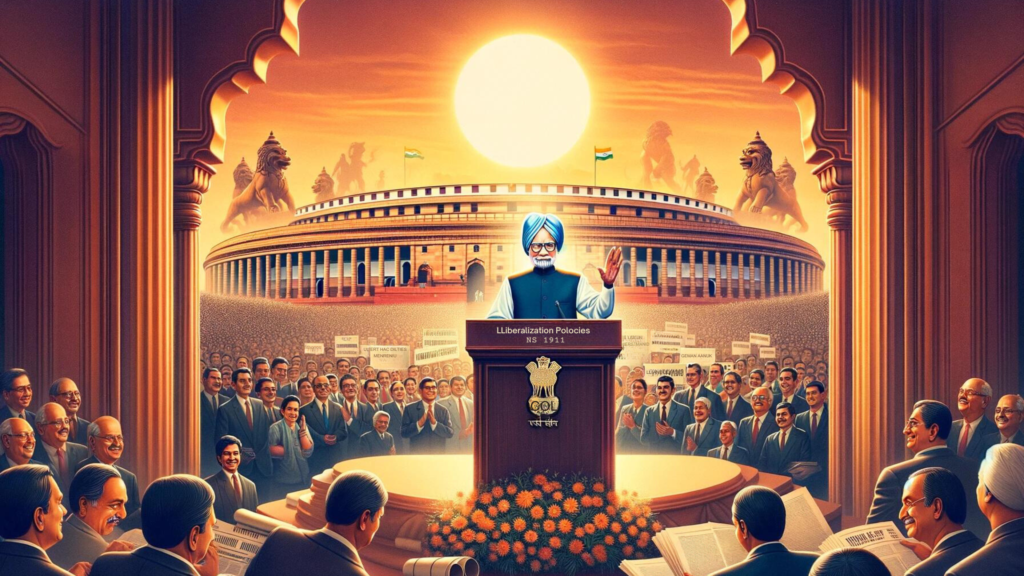
The reforms introduced significant changes in various sectors. One of the first steps was the dismantling of the “License Raj,” a complex system of licenses, regulations, and red tape that had been a major hurdle to business and industry. By removing these barriers, the government aimed to foster an environment more conducive to growth, innovation, and entrepreneurship.
Liberalization: Easing Controls
Liberalization encompassed a broad range of measures aimed at easing government control over the economy. Import tariffs were drastically reduced, making it cheaper and easier to import goods and technology. This move not only helped Indian industries access global markets but also stimulated competition, leading to improvements in quality and efficiency.
Another significant liberalization aspect was the encouragement of Foreign Direct Investment (FDI). The government relaxed restrictions on foreign investment, allowing multinational companies to enter various sectors of the Indian economy. This influx of foreign capital was instrumental in modernizing industries, creating jobs, and fostering a culture of innovation and technology transfer.
The financial sector also underwent substantial reforms, with the aim of making it more robust and responsive to the needs of a growing economy. Measures were taken to reform the banking sector, improve capital markets, and increase the availability of credit. These changes helped mobilize resources for development and facilitated a more efficient allocation of capital.
Privatization: Encouraging Private Participation
The pivot towards privatization was a key component of India’s economic reforms in the early 1990s. The government, recognizing the limitations of a predominantly public-sector-driven economy, began to encourage private-sector participation as a means to spur economic growth and improve efficiency. This shift aimed to reduce the fiscal burden of running inefficient state-owned enterprises and unleash the potential of private enterprise and competition.
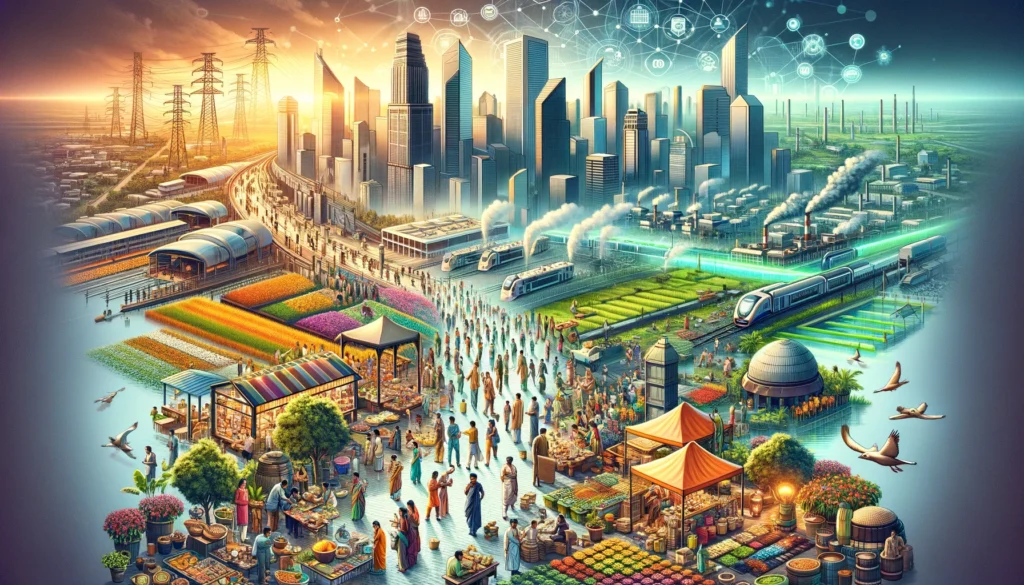
Privatization involved the sale or disinvestment of public sector undertakings (PSUs) to private investors and the opening up of sectors that were previously reserved for the government. This move not only helped in attracting domestic and foreign investments but also led to an improvement in the quality of goods and services. Industries such as telecommunications, aviation, and banking saw significant private investment, leading to better service delivery, innovation, and job creation. The encouragement of private participation marked a paradigm shift in India’s economic policy, laying the groundwork for a more market-oriented economy.
Globalization: Integrating with the World Economy
Globalization represented another pillar of India’s economic transformation. It entailed India’s deeper integration with the global economy through increased trade, foreign direct investment (FDI), and cross-border partnerships. The reduction of trade barriers, liberalization of FDI norms, and adoption of international standards and practices facilitated India’s entry into the global market.
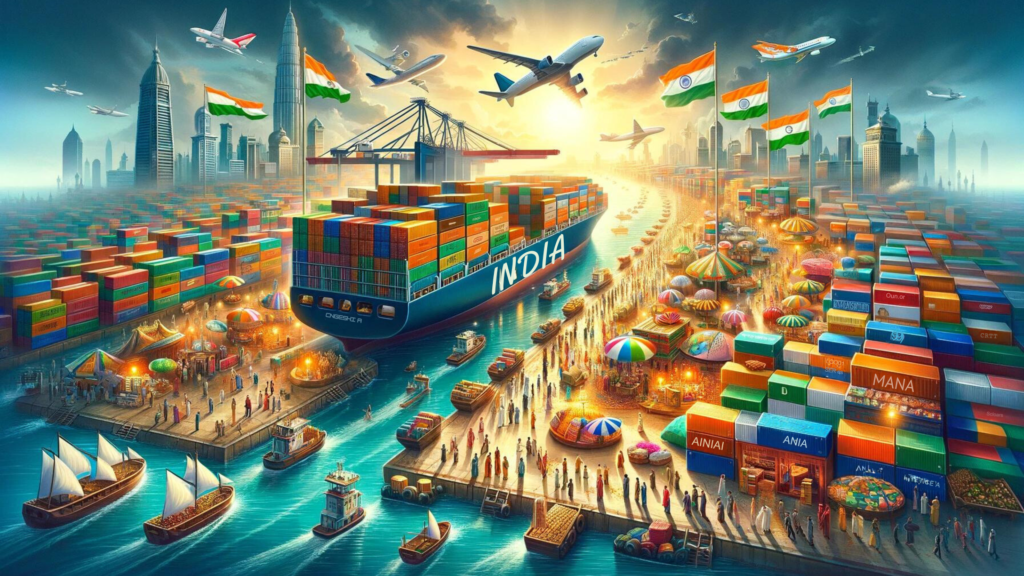
This integration was instrumental in exposing Indian industries to global competition, thereby enhancing efficiency and productivity. It also opened up new markets for Indian goods and services, particularly in sectors like textiles, pharmaceuticals, and information technology. Globalization brought about a significant inflow of foreign capital, technology transfer, and best practices, contributing to economic growth and development. It positioned India as a key player in the global economy, capable of attracting multinational corporations and establishing Indian companies as global entities.
The IT Boom and Beyond
The information technology (IT) boom of the late 1990s and early 2000s marked a significant milestone in India’s economic journey. India emerged as a global IT hub, with its software and services sector experiencing exponential growth. This boom was fueled by a large pool of skilled English-speaking professionals, cost advantages, and quality services that attracted major global companies to outsource IT and business process outsourcing (BPO) services to India.
The success of the IT sector had a multiplier effect on the economy, creating millions of jobs, generating substantial export revenues, and fostering a culture of entrepreneurship and innovation. It also led to the rise of global Indian IT giants and startups, contributing to India’s image as a digital powerhouse.
Beyond the IT sector, the effects of liberalization, privatization, and globalization spurred growth and modernization across various sectors, from manufacturing and services to retail and e-commerce. India’s economy became more diversified, resilient, and integrated into the global economy, setting the stage for sustained growth and development in the years to come.
These transformative policies – privatization, globalization, and the IT boom – reshaped India’s economic landscape, from a slow-growing economy to one of the world’s fastest-growing economies. They underscored the importance of embracing change, innovation, and integration with the global economy, principles that continue to guide India’s economic strategy today.
Author’s Note
The liberalization era represents a watershed moment in India’s economic history, marking the transition from a closed, regulated economy to one that is open and market-driven. The bold reforms of 1991 not only saved India from an economic meltdown but also set it on a path of sustained growth and development.
G.C., Ecosociosphere contributor.
References and Further Reading
- “India Unbound” by Gurcharan Das provides a personal account of India’s journey through economic reforms and their impact on various sectors.
- “The Turn of the Tortoise: The Challenge and Promise of India’s Future” by T.N. Ninan offers insights into the economic, political, and social transformations post-liberalization.
Stay tuned for our next post, where we explore India’s ongoing economic challenges and opportunities in the 21st century, highlighting its aspirations and the path ahead in the global landscape.


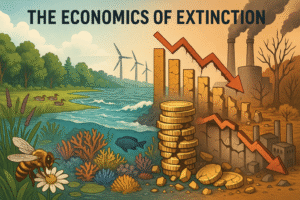


Comments
Can you be more specific about the content of your article? After reading it, I still have some doubts. Hope you can help me.
Thank you for your sharing. I am worried that I lack creative ideas. It is your article that makes me full of hope. Thank you. But, I have a question, can you help me?
Thank you for your sharing. I am worried that I lack creative ideas. It is your article that makes me full of hope. Thank you. But, I have a question, can you help me? https://www.binance.com/it/join?ref=S5H7X3LP
Thanks for sharing. I read many of your blog posts, cool, your blog is very good.